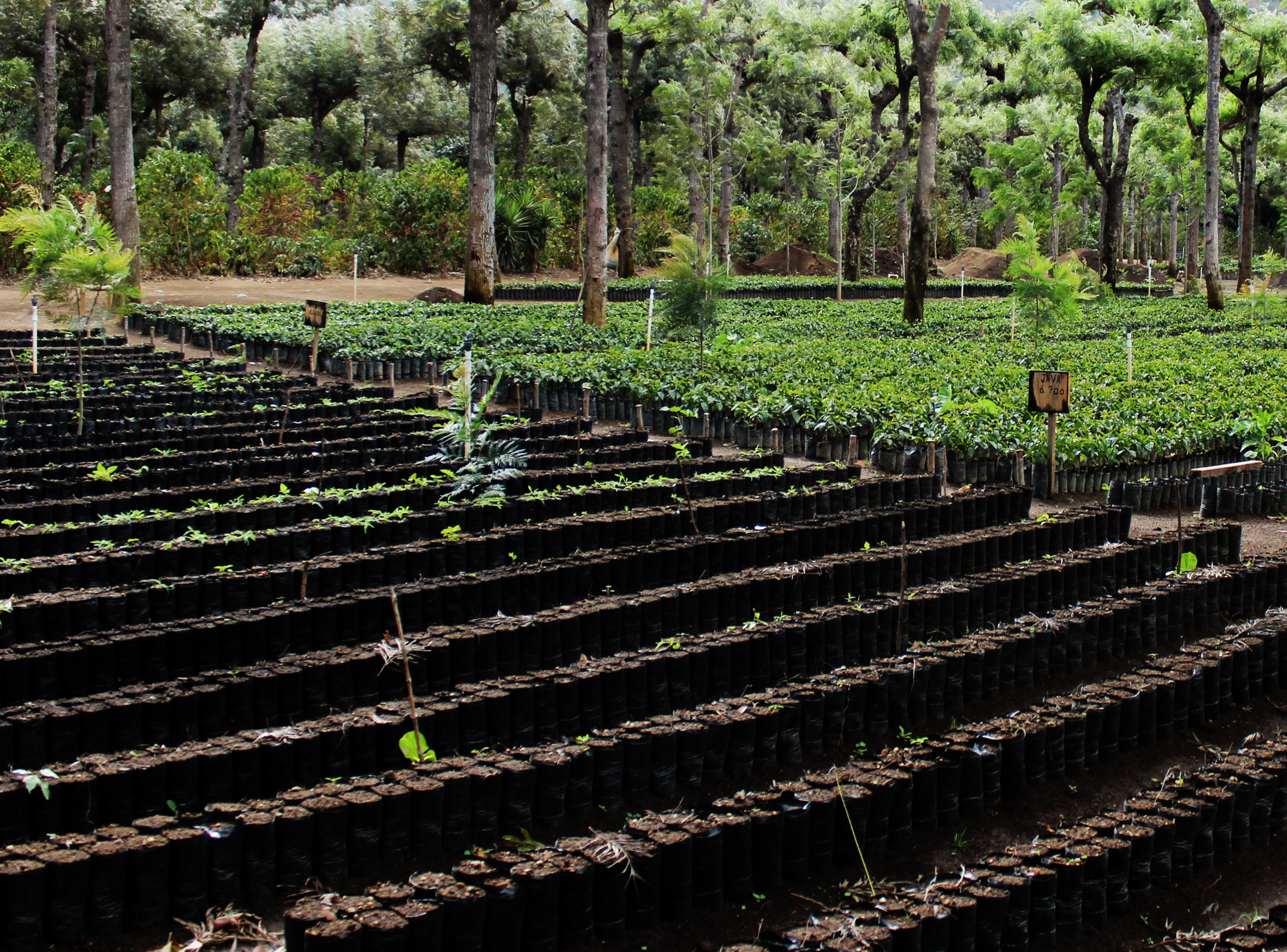 Coffee seedlings being propagated in a nursery. Planting new varieties has significant potential to improve yield in Guatemala, and to reduce losses from diseases like leaf rust.
Coffee seedlings being propagated in a nursery. Planting new varieties has significant potential to improve yield in Guatemala, and to reduce losses from diseases like leaf rust.
Coffee growing in Guatemala has changed dramatically in the last 20 years, triggered by a major slump in coffee prices in 2001. During the 1990s, the average farm size in Guatemala was between 100 and 200 square hectares, twice the size of typical farms in neighbouring countries El Salvador and Costa Rica (de Suremain 2000). Even on the largest farms, mechanised farming was all but impossible in Guatemala because of the terrain and large amount of tree cover, so these plantations relied heavily on hired manual labour for growing and harvesting.
In 1978, following the arrival of coffee leaf rust and coffee berry borer in Latin America, the national coffee organisations of Central American and Caribbean countries set up a cooperative research organisation, Promecafe, to tackle these new threats. During the 1980s and 1990s, Promecafe encouraged farms to move towards ‘technified’ or full-sun coffee growing, in an attempt to control the spread of coffee leaf rust. During this period, this modernisation movement resulted in the conversion of 40% of shaded coffee farms in Latin America to full-sun coffee production (Schmitt-Harsh 2013).
When coffee prices began to fall in the late 1990s, these large, semi-industrialised coffee farms ceased to be profitable, and many switched production to other crops such as macadamias, avocados, sugarcane, and bananas (Haggar et al 2013). The number of people employed in Guatemala’s coffee industry halved, and the overall export volumes dropped significantly.
The Rise of Smallholders
At the same time, the volume of high-quality coffee exported grew steeply. Large farms leaving the market created an opportunity for smallholder farmers, who started cultivating coffee alongside other crops on high-altitude farms. As a result, the overwhelming majority of coffees exported from Guatemala are now graded Strictly Hard Bean (SHB),